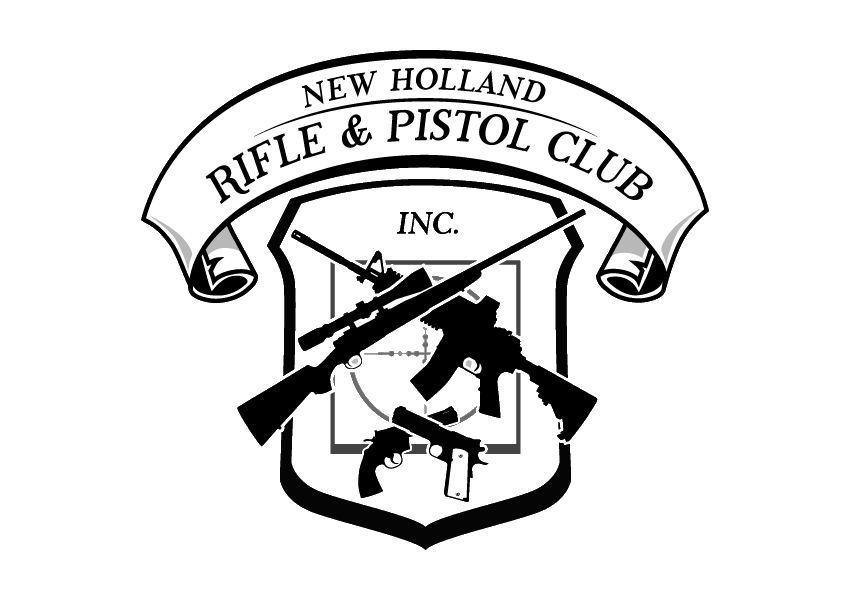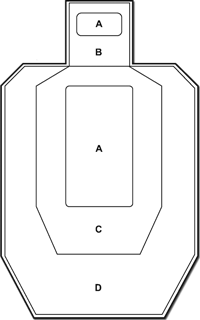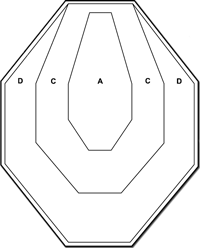-
-
-
-
USPSA
-
-
-
-
-
-

![]()
New Holland Rifle & Pistol Club is affiliated with the United States Practical Shooting Association (USPSA). We welcome shooters of all ability levels who can safely handle a center fire handgun or pistol caliber carbine, including loading and unloading your pistol/PCC without assistance and drawing from a holster. Safety is the most important part of the equation! At a minimum, you will need your pistol, an appropriate holster that securely attaches to your belt, 3-5 or more magazines and a way to carry them, and 150-200 rounds of ammunition.
Club matches are held on the second Saturday of every month from April to November. Setup begins at 8 AM, registration and sign-in is from 9 to 9:30 AM, new shooter briefing is at 9:30 AM, and match start time is 10 AM. We try to finish matches no later than 3 PM. We always appreciate people who can show up early to help set up or stay late to help break down. Preregistration is required, however walk-ons are accepted if there is available space. Signup is available on Practiscore located here https://practiscore.com/clubs/new-holland-practical-shooters at 8 PM, the Sunday before each match, and you can preregister even if you aren’t sure you will make it. If you find out you cannot make the match, please use the withdraw functionality on Practiscore as soon as possible to free up a spot for someone else. You will pay your match fee when you sign in.
All weather-related and other updates about specific matches are posted on the publicly accessible Facebook page and sent via email to people registered for the match.
We look forward to seeing you at a match!
Frequently Asked Questions – USPSA at New Holland
Do I need to be a member of either NHRPC or USPSA?
You do not need to be a member of NHRPC to participate in our matches, although you must sign a waiver. NHRPC members do receive a discount on match fees. USPSA membership is not required, but if you try it out and like it, you should join at www.uspsa.org. Each match will have at least one special stage known as a classifier, which contributes to your skill ranking in the USPSA organization. You must be a member of USPSA in order for your score on the classifier stage(s) to be recorded with the USPSA organization.
How can I get ready for my first match?
You don’t need to be a fast or experienced shooter for USPSA. You don’t need fancy equipment or a “race gun” either. As long as you can safely handle your pistol, including drawing from a holster, and understand how to safely move with a gun in your hands, we will be happy to welcome you to a match. Before you show up, we recommend that you watch a few YouTube videos about USPSA, like this one, and that you read this blog post written by one of our Match Directors, which describes all of the non-shooting parts of competitive shooting matches. You might also enjoy reading past articles by Annette about getting into competitive shooting, over at Gun Carrier.
Can I bring my _______ handgun?
As a general rule of thumb, if you have a pistol caliber handgun with a minimum caliber of 9mm and for which a holster is available, we can find an appropriate division for you in USPSA. Sorry, no AR pistols (though we’d love to see your holster!). But yes, you can bring your gun with an optic on top or a flashlight on the rail, or your 8-round revolver, or just the gun you used for IDPA. Just make sure you have enough magazines for a minimum of 32 rounds in one stage, although keep in mind that there are some limits on how long your magazines may be if you use extended magazines or basepads and that certain divisions have a limit to how many rounds you may load (see below). Bring what you have to your first couple of matches and we will put you into the appropriate division. Later on, you can worry about whether or not your equipment is “competitive” for the division of your choice.
What else should I bring?
In addition to your pistol? You will need an appropriate holster that is attached to your belt and covers the trigger guard completely. Shoulder holsters are not permitted, nor are any holsters that point the muzzle more than 3 feet from your feet when you are standing up. You must be able to safely draw the gun without pointing it up range at any time. We prefer if you do not use “Serpa” style holsters and if you have a holster that permits you to reholster the gun one-handed either with a mouth that stays open by itself or, if you are experienced with one, a “race” holster. We won’t disqualify you unless you or your equipment are blatantly unsafe and cannot be made safe on the range, or if it is specifically prohibited by USPSA rules. You should bring a minimum of 3 magazines or 6 speed loaders/moon clips. Belt pouches or holders are recommended, but not required. Pockets work too! Plan on bringing 150-200 rounds of ammunition, to allow for re-shoots or other issues. Finally, don’t forget your regular range gear: ear and eye protection, snacks and hydration, perhaps sunscreen and a brimmed hat.
Can I just come watch?
Spectators are welcome, assuming the club waiver has been signed and that eye and ear protection is worn at all times. You might get a lot of questions about why you aren’t shooting, though!
What’s this about divisions?
USPSA divides competitors by the type of pistol they shoot so that shooters can compare ‘apples to apples’ with their scores. Divisions are equipment-based and are:
- Production: generally factor guns, which must be shot with a limit of 10 rounds per magazine during the course of fire.
- Limited: most common guns used are hammer fired guns that are single action only or double/single action, but started "cocked and locked" in single action. No magazine capacity limits, although there are length limits. If you are unaware of the length limits, chances are you're fine, because you'd know if you had a "long stick."
- Single Stack: Basically the division for 1911 guys
- Open: Race guns that cost thousands of dollars. If you have one, you probably didn't need to read this page anyway.
- Carry Optics: Similar guns as found in production, or some guns found in limited (but must start in double action), but have a slide-mounted optic mounted.
- Limited Optics: Similar guns as found in limited, meaning single action only is fine, as are mag wells, but have a slide-mounted optic.
- PCC: Pistol caliber carbine.
- Revolver: Self-explanatory division
How does scoring work?
In addition to steel targets, you will see cardboard targets in these shapes and configurations. (The B zone in the target on the left no longer exists, and is now part of the C zone beneath it, but it's such a nice image, so it remains.)


For each target, A ("alpha") is worth more points than C ("charlie"), which is worth more points than D ("delta"). USPSA scores each stage by calculating your “hit factor”, which is based how many points you hit on your targets and dividing it by the amount of time spent you spent shooting. The hit factors of every shooter in your division are then compared so that the shooter of the highest hit factor earns a 100% of the points available for the stage and everyone else is graded on a curve behind him or her. For a comprehensive explanation, visit the rules page on the USPSA website here.
How does USPSA classification work?
Classifications are earned by USPSA members shooting standardized courses of fire at matches, called classifier stages, which are entered into a national database with all USPSA members to see how you stack up. There are special rules about how the different classifier stages you have shot are calculated into your overall percentage, like being graded on a curve. But for your first few matches? Don’t worry about it.
When and where are scores posted?
Scores are posted on the Practiscore results web page immediately after the match (search for New Holland). After giving shooters a week or so to review scores, we will post them on our website and to the USPSA website, and enter them into the classification system. You can watch for links and announcements on our Facebook page.
Wait, weren't the matches on Sundays?
Yes, for a many years, going back prior to the days when we shot IDPA, the matches were on the second Sunday. Starting in September of 2021, we moved our match from the second Sunday to the second Saturday. We did this because no one likes weekday matches, so that left only Saturday when Sunday was no longer an option.
We hope you’ll give USPSA a try – we think you’ll like it! And don’t forget, the freestyle format of USPSA means that in addition to its being a competition of marksmanship and speed, it is also a mental challenge, as planning the way you will shoot and navigate a course of fire is a big part of the game.
If you have any other questions, please feel free to contact the Match Director, Tom Miller via email.